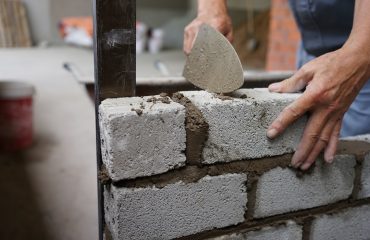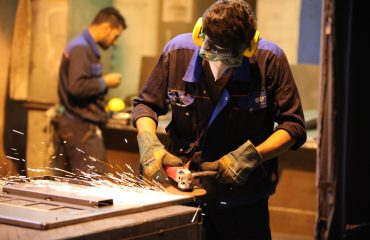body {
font-family: sans-serif;
line-height: 1.6;
}
h1, h2, h3 {
color: #333;
}
h1 {
font-size: 2.5em;
}
h2 {
font-size: 2em;
}
h3 {
font-size: 1.5em;
}
Boiler tubes are the unsung heroes of power generation and numerous industrial processes. These seemingly simple components are crucial for efficient heat transfer, enabling the conversion of fuel energy into steam or other working fluids. This comprehensive guide delves into the technology and use of boiler tubes, exploring their materials, manufacturing, applications, maintenance, and future trends.
The Heart of Heat Transfer: Materials Used in Boiler Tube Construction
The choice of material for boiler tubes is paramount, dictated by factors like operating pressure, temperature, and the type of fluid being heated. Common materials include:
- Carbon Steel: Cost-effective and widely used for low-pressure applications. However, its susceptibility to corrosion limits its use in high-temperature, high-pressure environments.
- Alloy Steel: Offers enhanced strength, creep resistance, and corrosion resistance compared to carbon steel. Various alloying elements (chromium, molybdenum, vanadium) are added to tailor properties for specific operating conditions.
- Stainless Steel: Excellent corrosion resistance, making it suitable for aggressive environments and high-purity applications. Different grades (e.g., 304, 316, 321) offer varying levels of performance.
- Copper Alloys: Possess high thermal conductivity, making them ideal for applications requiring rapid heat transfer. However, they are susceptible to corrosion in certain environments.
- Nickel Alloys: Exceptional corrosion resistance and high-temperature strength, making them suitable for extremely demanding applications, often found in high-pressure boilers and those handling corrosive fluids.
The selection process involves careful consideration of the boiler’s operating parameters and the potential for corrosion, erosion, and creep.
Manufacturing Methods: Shaping the Powerhouse Tubes
The manufacturing process for boiler tubes is a complex undertaking, ensuring dimensional accuracy, surface finish, and metallurgical integrity. Common methods include:
- Seamless Tubes: Produced by piercing and drawing a solid billet, resulting in a homogenous structure free from welds. This method is preferred for high-pressure applications where weld integrity is critical.
- Electric Resistance Welded (ERW) Tubes: Formed by rolling and welding a strip of metal, offering a cost-effective alternative to seamless tubes for lower-pressure applications. Advanced welding techniques ensure high-quality welds.
- Spiral Welded Tubes: Manufactured by welding a strip of metal into a spiral shape, allowing for the production of larger diameter tubes. This method is often used for large-diameter boiler tubes and heat exchangers.
Post-manufacturing processes, such as heat treatment and surface finishing, are crucial for optimizing the tubes’ properties and extending their lifespan.
Diverse Applications: Boiler Tubes in Action
Boiler tubes find widespread applications across various industries:
- Power Generation: The backbone of power plants, transferring heat from the combustion chamber to produce high-pressure steam that drives turbines.
- Industrial Processes: Used in various industrial applications, including chemical processing, refining, and waste-to-energy plants, providing heat for processes or generating steam.
- Heating Systems: Found in large-scale heating systems, providing efficient heat transfer for buildings and industrial complexes.
- Heat Exchangers: Essential components in heat exchangers, facilitating efficient heat transfer between fluids.
The specific type of boiler tube employed depends on the application’s requirements, encompassing pressure, temperature, and the nature of the fluids involved.
Maintaining Peak Performance: Boiler Tube Inspection and Maintenance
Regular inspection and maintenance are vital for ensuring the operational efficiency and longevity of boiler tubes. This involves:
- Visual Inspection: Checking for signs of corrosion, erosion, scaling, and other defects.
- Non-Destructive Testing (NDT): Employing techniques like ultrasonic testing, radiography, and eddy current testing to detect internal flaws.
- Chemical Cleaning: Removing scale and deposits that can reduce heat transfer efficiency and cause corrosion.
- Repair and Replacement: Addressing damaged tubes through repair techniques or replacement with new tubes.
Proactive maintenance programs minimize downtime and prevent catastrophic failures, ensuring the safe and efficient operation of the boiler system.
Future Trends: Innovations in Boiler Tube Technology
Ongoing research and development focus on improving boiler tube technology, focusing on:
- Advanced Materials: Exploring new materials with enhanced corrosion resistance, high-temperature strength, and improved thermal conductivity.
- Improved Manufacturing Techniques: Developing more efficient and precise manufacturing processes to reduce costs and enhance quality.
- Enhanced Durability and Lifespan: Designing tubes with improved resistance to wear and tear, extending their service life.
- Smart Monitoring Systems: Implementing sensors and data analytics to monitor tube conditions and predict potential failures.
These advancements will lead to more efficient, reliable, and environmentally friendly boiler systems in the future.
Tags: boiler tubes, boiler tube technology, boiler tube materials, power generation, industrial boilers




